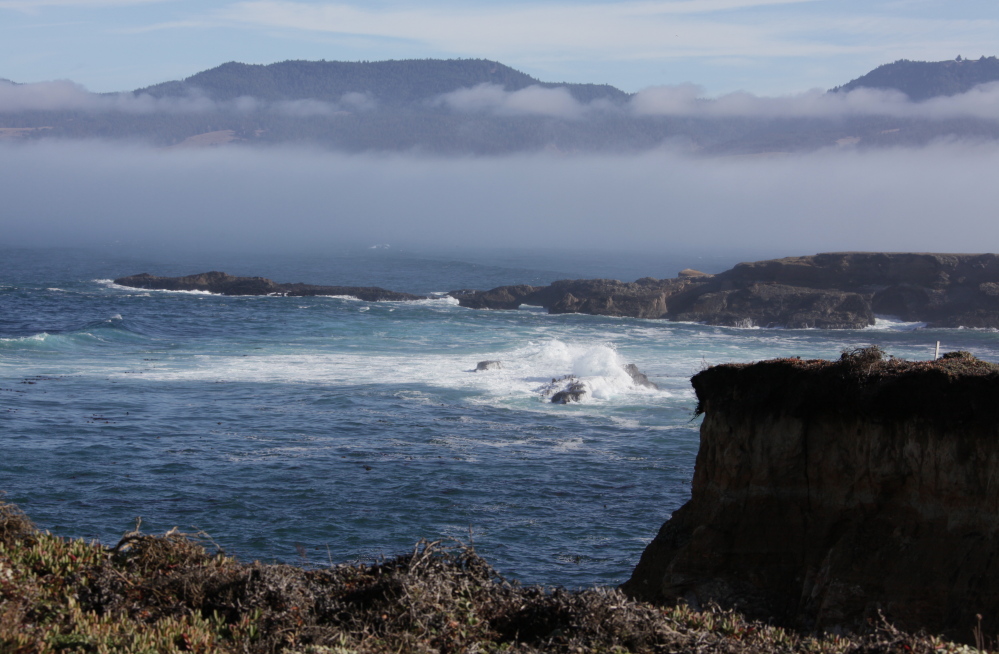WASHINGTON — President Obama will designate a 1,665-acre nature preserve on California’s coast a national monument, according to White House officials, signaling an increasingly muscular conservation policy.
The announcement Tuesday to protect a swath of the Mendocino coastline, known as Point Arena-Stornetta Public Lands, follows the Environmental Protection Agency’s move a week and-a-half ago to block development of a massive gold and copper mine in Alaska, on the grounds that it could jeopardize the wild salmon in Bristol Bay.
The new national monument includes the mouth and estuary of the Garcia River along with jagged bluffs, onshore dunes, tidal pools and meadows. It provides habitat for migratory waterfowl, shore birds and raptors as well as several fish species, including the imperiled black oyster catcher and chinook and coho salmon.
While Congress officially designates protection categories such as wilderness areas, national parks and wildlife refuges, the president can impose similar land-use restrictions through creation of a national monument. Obama’s proclamation will require the federal government to develop a management plan with public input within three years, according to a White House official, and will require the protection of objects of national significance such as the area’s natural resources.
In July, the House unanimously approved a measure by Rep. Jared Huffman, D-Calif., to add the area to the California Coastal National Monument, a 1,100-mile marine preserve adjacent to the site that President Bill Clinton declared in 2000. While the project received $2 million in the recently passed omnibus budget bill, a measure authored by Sen. Barbara Boxer, D-Calif., has not yet passed the Senate.
The sponsors of the measure in both chambers have urged Obama to use his authority under the Antiquities Act of 1906 to protect the area. Congress just approved the first wilderness bill since 2009 last week – designating a 32,500-acre area in Michigan – but several senators remain resistant to protecting more public lands.
“If we wait for Congress, it’s never going to happen,” said Scott Schneider, chief executive of Visit Mendocino County.
OVERCOMING RELUCTANCE
While the administration has been reluctant in the past to declare many monuments – the last time it did so was nearly a year ago, when Interior Secretary Ken Salazar announced five designations before leaving office – the administration is increasingly open to the idea.
White House counselor John Podesta, who played a key role in crafting a national monuments strategy under Clinton, and said last year that conservation should be put on an equal footing with energy development on federal lands, has pushed for more designations since joining the West Wing staff this year.
In his State of the Union address in January, Obama pledged that he would “use my authority to protect more of our pristine federal lands for future generations.”
The idea of a national monument in Mendocino enjoys broad local support because tourism ranks as one of its top industries, after agriculture. A Bureau of Land Management report estimates that outdoor recreation on BLM lands across California contributed nearly $900 million to the economy in 2012.
A presidential designation “would raise national awareness of our coastline and encourage people to experience the openness, the beauty and the inspiration of the land,” Schneider said.
While the new monument is smaller than others the administration is now considering, including the nearly 500,000-acre Organ Mountains-Desert Peaks region near Las Cruces, N.M., congressional Republicans remain opposed to any presidential use of the Antiquities Act.
Rep. Rob Bishop, R-Utah, chairman of the House Natural Resources subcommittee on public lands and environmental regulation, has questioned why the president would designate a national monument on the California coast when Huffman’s bill is still pending in the Senate. He said in an interview this month that he would resist any efforts by the White House to impose new limits on federal lands use.
“With a divided Congress, it’s obviously difficult to get anything done, but that doesn’t mean we shouldn’t try,” Bishop said.
KEEPING HABITAT INTACT
Mike Matz, who directs the Pew Charitable Trusts’ U.S. public lands program, said that even putting aside a small area can yield major benefits.
“When it comes to protecting places, conservation biologists will say that bigger is generally better to keep core habitat intact, but even smaller spots can have significant ecological value for specific species,” Matz said by email. “I would say it’s all significant environmentally and economically, and that a place like Stornetta is as important to the local communities as Organ Mountains, and both have ecological values that should be protected.”
He noted that only 5 percent of the nation’s lands enjoy wilderness protections, making any expansions significant.
“The fact that the president is willing to exercise his authority is more than symbolic,” Matz said. “It’s a step toward providing more balance between protection and development. And, if Congress gets into a healthy competition with him over which branch can do more, all the better.”
Copy the Story LinkSend questions/comments to the editors.



Success. Please wait for the page to reload. If the page does not reload within 5 seconds, please refresh the page.
Enter your email and password to access comments.
Hi, to comment on stories you must . This profile is in addition to your subscription and website login.
Already have a commenting profile? .
Invalid username/password.
Please check your email to confirm and complete your registration.
Only subscribers are eligible to post comments. Please subscribe or login first for digital access. Here’s why.
Use the form below to reset your password. When you've submitted your account email, we will send an email with a reset code.